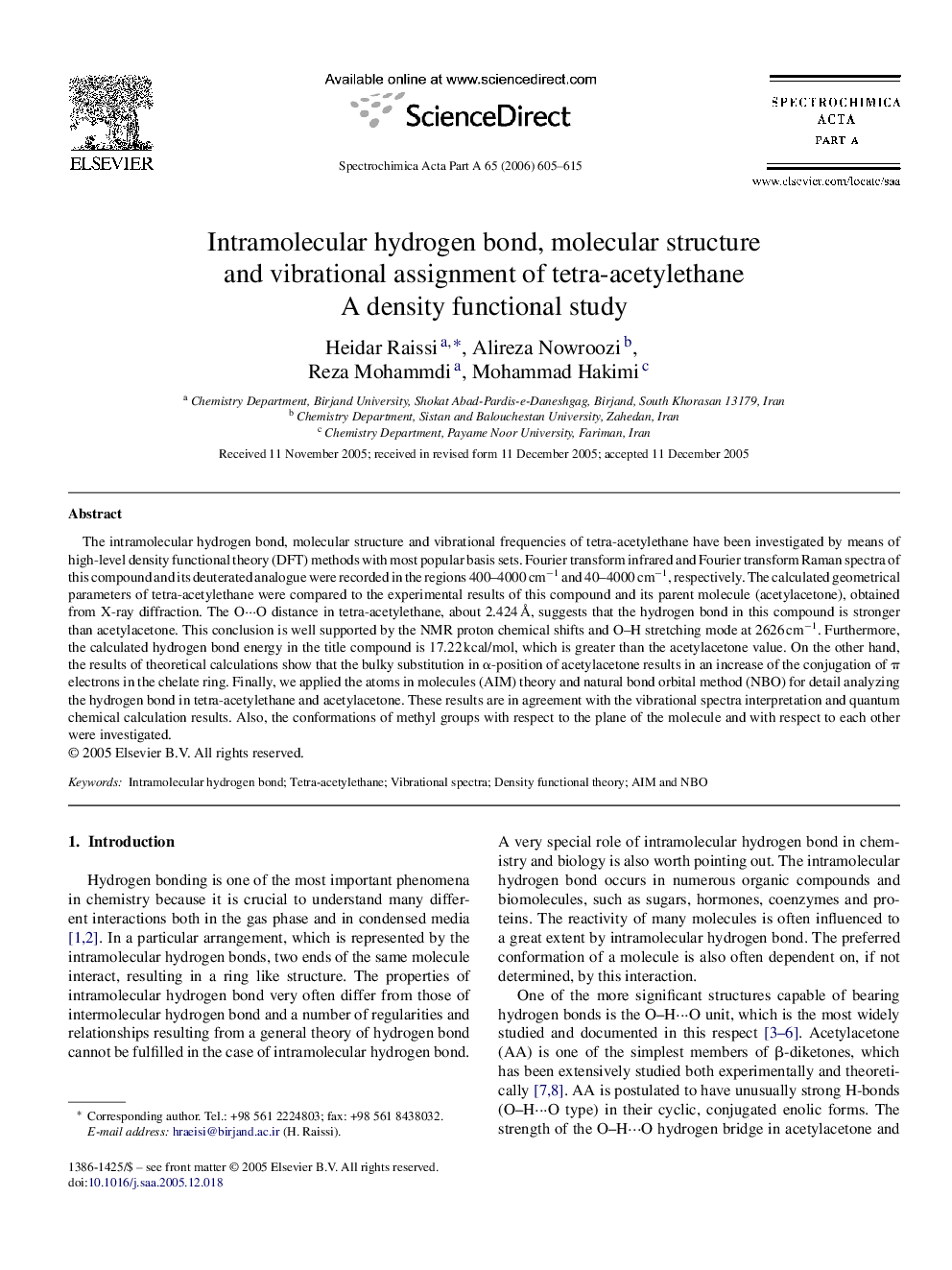| Article ID | Journal | Published Year | Pages | File Type |
|---|---|---|---|---|
| 1236292 | Spectrochimica Acta Part A: Molecular and Biomolecular Spectroscopy | 2006 | 11 Pages |
The intramolecular hydrogen bond, molecular structure and vibrational frequencies of tetra-acetylethane have been investigated by means of high-level density functional theory (DFT) methods with most popular basis sets. Fourier transform infrared and Fourier transform Raman spectra of this compound and its deuterated analogue were recorded in the regions 400–4000 cm−1 and 40–4000 cm−1, respectively. The calculated geometrical parameters of tetra-acetylethane were compared to the experimental results of this compound and its parent molecule (acetylacetone), obtained from X-ray diffraction. The O···O distance in tetra-acetylethane, about 2.424 Å, suggests that the hydrogen bond in this compound is stronger than acetylacetone. This conclusion is well supported by the NMR proton chemical shifts and O–H stretching mode at 2626 cm−1. Furthermore, the calculated hydrogen bond energy in the title compound is 17.22 kcal/mol, which is greater than the acetylacetone value. On the other hand, the results of theoretical calculations show that the bulky substitution in α-position of acetylacetone results in an increase of the conjugation of π electrons in the chelate ring. Finally, we applied the atoms in molecules (AIM) theory and natural bond orbital method (NBO) for detail analyzing the hydrogen bond in tetra-acetylethane and acetylacetone. These results are in agreement with the vibrational spectra interpretation and quantum chemical calculation results. Also, the conformations of methyl groups with respect to the plane of the molecule and with respect to each other were investigated.
